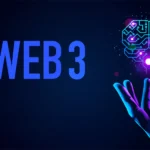Ethereum has firmly established itself as a cornerstone of the digital asset economy. Its pioneering role in decentralized finance (DeFi), smart contracts, and tokenization has reshaped how assets are created, traded, and managed. With its growing ecosystem and technological advancements, Ethereum continues to fuel innovation, driving the evolution of the global digital economy.
1. Smart Contracts: The Foundation of Innovation
At the heart of Ethereum’s impact are smart contracts—self-executing agreements that run automatically when predefined conditions are met. These contracts eliminate intermediaries and enable trustless, transparent transactions.
Key applications of smart contracts in the digital asset economy include:
- Decentralized trading platforms where users can exchange assets directly
- Automated financial agreements for lending, borrowing, and escrow services
- Supply chain tracking for asset provenance and authenticity verification
By simplifying and securing transactions, smart contracts have unlocked new possibilities in finance, legal agreements, and asset management.
2. Tokenization: Redefining Ownership
Ethereum has made it possible to tokenize nearly anything, from cryptocurrencies and stablecoins to real-world assets like real estate and luxury goods. Tokenization allows for fractional ownership, enhanced liquidity, and simplified asset transfer.
Examples of Ethereum-driven tokenization include:
- Real estate tokens that represent fractional property ownership
- Security tokens that offer investors shares in a company or project
- Art and collectibles represented as digital tokens or NFTs
This innovation democratizes investment opportunities, making previously inaccessible markets available to a wider audience.
3. The Rise of DeFi: A New Financial Paradigm
Ethereum is the foundation of the DeFi revolution, which has transformed traditional financial services. DeFi applications allow users to access services such as lending, borrowing, trading, and yield farming without intermediaries like banks.
Key benefits of Ethereum-powered DeFi platforms include:
- Permissionless access: Anyone with an internet connection can participate
- Transparency: All transactions are recorded on the public blockchain
- Control: Users maintain full custody of their assets
By reducing barriers to entry and enabling more efficient financial services, DeFi is empowering individuals and reshaping the financial landscape.
4. NFTs and Digital Asset Ownership
Non-Fungible Tokens (NFTs) are revolutionizing how digital and physical assets are owned and traded. Ethereum’s ERC-721 standard is the backbone of the majority of NFTs, which have applications far beyond digital art.
Use cases of NFTs include:
- Proof of ownership for intellectual property and collectibles
- Ticketing systems that prevent fraud and scalping
- Gaming assets that provide real-world value to players
By enabling verifiable ownership and uniqueness, NFTs are creating new opportunities in gaming, media, and entertainment.
5. DAOs: Decentralized Asset Governance
Decentralized Autonomous Organizations (DAOs) are emerging as a powerful tool for collaborative asset management. Built on Ethereum, DAOs enable decentralized governance, allowing members to vote on decisions and manage funds collectively.
Benefits of DAOs in the digital asset economy include:
- Democratic decision-making for investment strategies
- Transparent governance with blockchain-based voting systems
- Global collaboration without geographical restrictions
DAOs are disrupting traditional corporate structures and redefining how digital assets are managed and governed.
6. Ethereum’s Role in Cross-Chain Interoperability
As the digital asset economy expands, interoperability between blockchains has become increasingly important. Ethereum is a leader in fostering cross-chain communication through solutions like Layer 2 protocols and bridges.
This interoperability enables:
- Seamless asset transfers between different blockchains
- Greater liquidity across DeFi platforms
- Enhanced user experiences in decentralized applications (dApps)
By promoting collaboration between networks, Ethereum is contributing to a more integrated and efficient digital asset ecosystem.
7. Future Prospects with Ethereum 2.0
Ethereum’s transition to Ethereum 2.0, featuring a Proof of Stake (PoS) consensus mechanism, promises significant improvements in scalability, security, and energy efficiency. These advancements will further cement Ethereum’s role in the digital asset economy.
Key expected benefits include:
- Faster and cheaper transactions
- Reduced environmental impact
- Increased capacity for decentralized applications
With these upgrades, Ethereum will be better positioned to support the growing demands of the digital asset market.
Conclusion
Ethereum’s impact on the evolving digital asset economy is profound. From smart contracts and tokenization to DeFi and NFTs, Ethereum has driven innovation and created new opportunities for individuals and businesses alike. As the network continues to evolve and scale, its influence on the digital asset economy will only deepen, shaping a more decentralized, transparent, and accessible financial future.
Makayla Broadby a Web3 and NFT specialist tracking metaverse developments, digital art trends, and gaming innovations. Makayla deciphers how blockchain is revolutionizing digital experiences.


